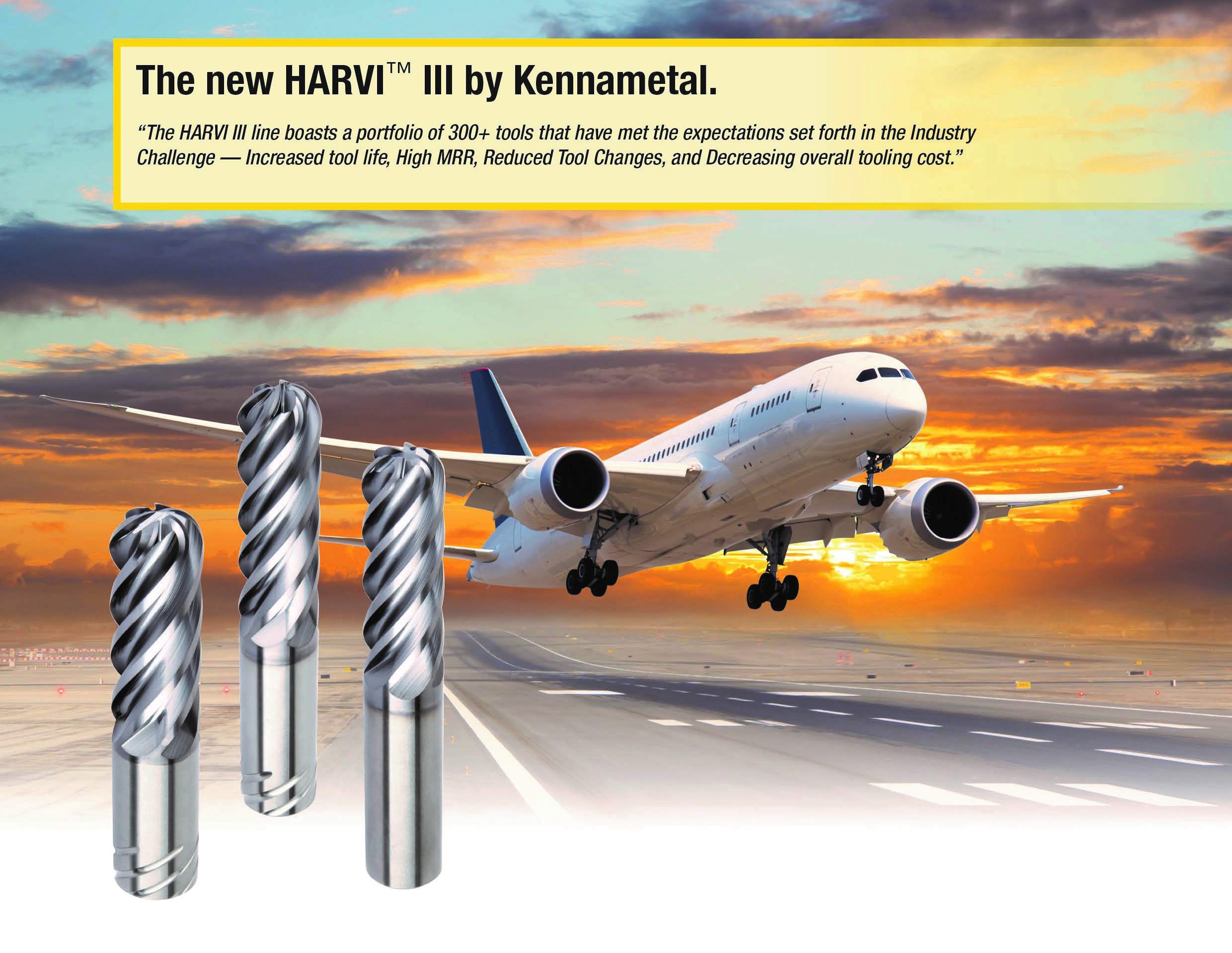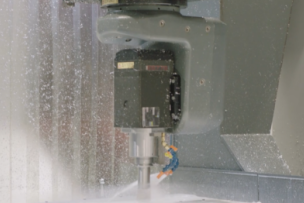The results were impressive. During its final round of testing, Kennametal used a shrink fit Safe-Lock™-style holder and operated its tools in the “exceeds” category in all cases. With the traditional milling approach, less than 0.001 in. (0.025 mm) of tool wear was observed after one hour, with a surface finish of 23 μin Ra (0.6 μm). The high velocity approach provided comparable results, with tool wear measured at less than 0.0014 in. (0.035 mm) and surface roughness better than 27.5 μin Ra (0.7 μm). Both met the aircraft manufacturer’s requirements, and also delivered a 20% greater metal removal rate than its competitors because Kennametal chose to supply a 6 fute instead of a 5 flute tool.
Moving From the Floor to the Catalog
While the tests were being conducted for the challenge, company engineers were also conducting tests of the Kennametal tools internally, validating them against criteria used for any tools under consideration for production use. They tested multiple tools and were able to run for 2,000 minutes with no more than 0.00157 in. (0.039 mm) wear.
What does this mean to other customers? Kennametal has recently released the results of its months of testing, under a name you might be familiar with. The HARVI III Aerospace Expansion line of solid carbide end mills is based on much of the cutting tool technology that made the HARVI III so popular. It offers six unequally spaced flutes to break up chatter even at higher feed rates. Its lower cutting forces and eccentric relief design provides improved tool life, and has a tapered core that increases stability during heavy cutting conditions. “Interestingly, whatever modifications to the existing HARVI III were tested, we always came back very close to the existing design we’ve had for the past five years,” says Davis. “The final modification was so minor that we plan to simply upgrade the old HARVI III design.”
The new HARVI is available in KCSM15 Beyond grade, which is designed for exceptional performance in titanium and stainless steels, and its center cutting design gives you the flexibility to use it for roughing and finishing operations alike. “In total, 303 standard catalog line items were created,” Davis notes. “This includes ball nose and square end mills with various radii in different overall lengths. The standard offering comprises diameter ½ in. up to 1¼ in. off the shelf and even 1½ in. made-to-order with very short lead times. This illustrates how serious we take the new product line, which is much larger than any HARVI line launched in the past.”
“The HARVI III Aerospace Expansion line is now part of the aerospace leader’s internal tooling catalog,” adds Kennametal Key Account Manager Peter Lawson. “That’s good for them, but it’s even better for those shops that struggle to achieve tool life in titanium, who can now leverage the results of our combined testing. The HARVI III line not only produces more parts, more predictably and in less time than the competition, it also offers better chip control and tool life, a win-win for any shop. It was both a privilege and an honor to be chosen for this competition, and it’s gratifying to deliver a product that perfectly addresses so many of our customers’ needs.”
To learn more about the HARVI III line of solid carbide end mills and browse the different mill diameters available, go to MSCDirect.com.



 copy 3.jpg?itok=jDQ0Lywg)




Talk to Us!
Leave a reply
Your email address will not be published. Required fields are marked *